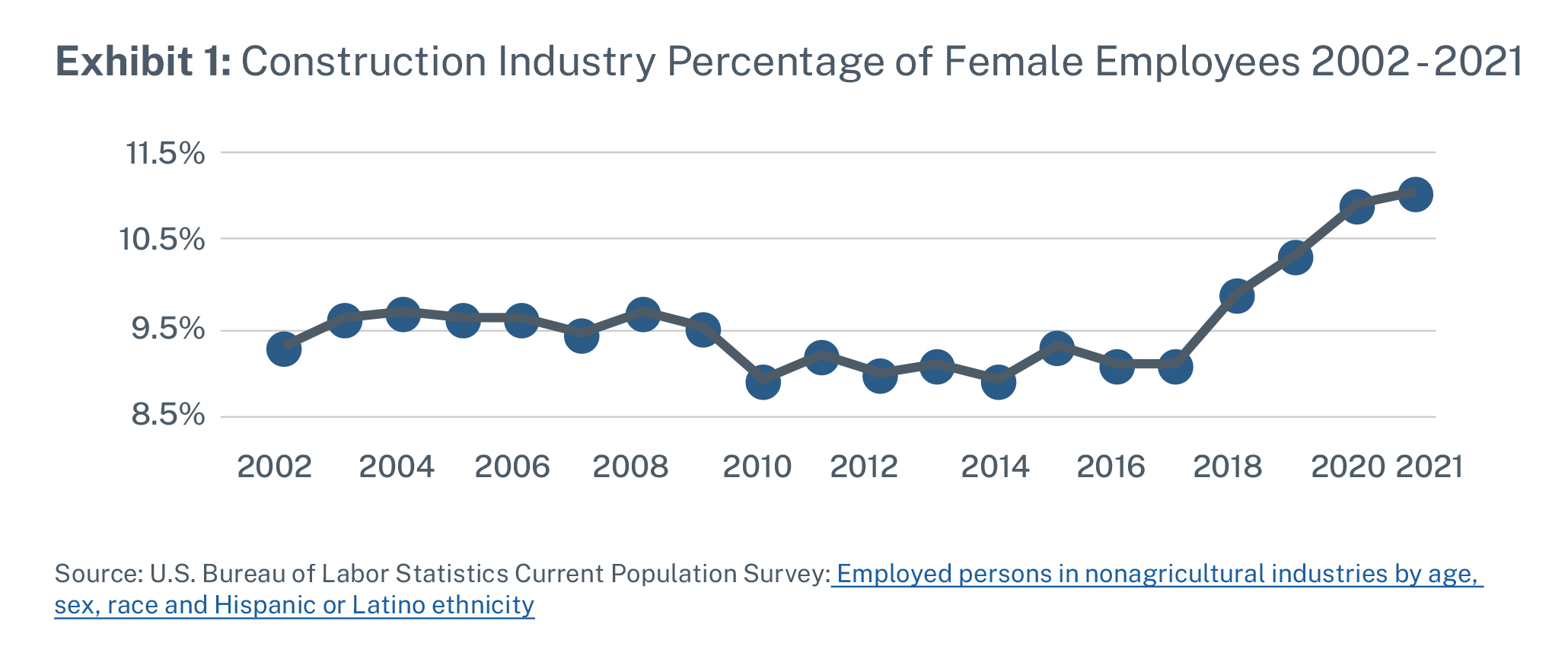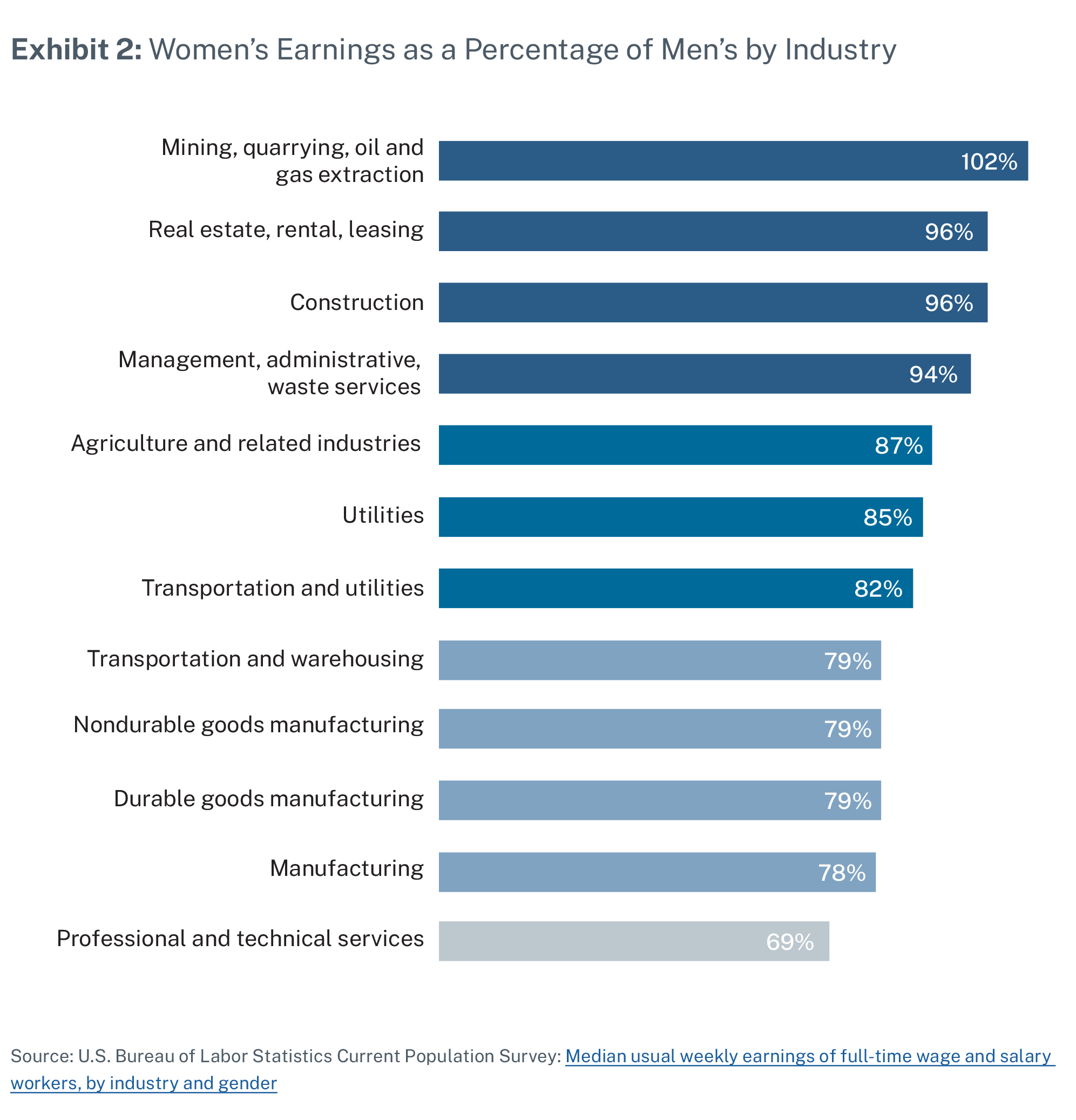Engage More Women to Improve Labor Constraints in the Construction Industry

It is no secret that labor participation in the built environment has long been male dominated, but increasingly that is changing as more companies in the engineering and construction (E&C) industry work to attract, engage and retain more women in their workforces. In the context of the sustained labor challenges facing the industry, the underrepresentation of women in the E&C workforce highlights a glaring opportunity.
The most recent Bureau of Labor Statistics (BLS) data indicates that women currently represent only 11% of the construction industry. However, BLS data also shows that women are entering engineering and construction fields at higher rates than ever before.
While 11% may seem dismal when compared to female workforce participation of 51% across all industries, this figure is up 20% over the last 10 years, trending in the direction leaders recognize as vital to building a strong workforce. With the industry currently needing to fill 362,000 vacant positions, women are a critical part of reducing labor shortages.

Interestingly, while the labor participation rate gap is one of the highest, the pay gap in the E&C industry is one of the lowest. The average woman working in the U.S. makes 84% of the average man’s pay; but in the construction industry, the average woman makes 96% of the average man’s pay level.

But that’s not the complete picture. Women in engineering and construction most frequently hold office and managerial roles, which are better paid than entry-level field roles. When you look at specific roles in construction, the gaps become more evident. Female construction managers, common field labor occupations, and architects and engineers make 75%, 79% and 83%, respectively, of that of their average male counterparts.

While it is important to recognize and consider the wage gap in construction, some of the discrepancies can be attributed to characteristics like years of experience and tenure. Few in the industry know a woman nearing retirement age working in the field as a carpenter while many know a man nearing retirement in those positions. Additionally, BLS research revealed much of the overall earnings gap between genders can be explained by age and hours worked.
There has been much progress in the industry over the last two years, indicating that women are helping close the productivity and labor gaps by entering the construction workforce. As the below chart explains, more women are entering the workforce and approaching the wages of their male counterparts.

Implementing Changes
Our 2023 Labor Productivity Study found that contractors lost approximately $30 billion to $40 billion to labor inefficiencies in 2022. These labor productivity deficits translate to significant project and enterprise margin erosion. In FMI’s recent Civil Infrastructure Construction Index (formerly Heavy Civil Infrastructure Index), the biggest issue in 2024 for respondents is hiring and retaining the skilled labor needed to complete work.
That means competition for workers will remain fierce and companies will need to review their own salaries and benefits to ensure equity where appropriate. Here are some other ways you can enact changes in your compensation practices.
- Take a hard look at your own pay practices: Statistical analyses can be conducted to determine nondiscriminatory reasons for pay differentials in your workforce, identify areas of concern and increase pay where appropriate. Even when valid statistical analyses are not possible, employee pay comparisons can be made across titles, levels and pay ranges.
- Develop pay ranges: Having well-designed pay ranges calibrated to the areas and industries within which you compete for talent can assist human resources and managers in making better and more data-driven pay decisions. Pay ranges are not only good practice, but also increasingly necessary for regulatory compliance. As of 2024, nine states have active pay transparency statues requiring employers to provide pay ranges when requested or automatically during the recruiting process. The 10th state, Illinois, is set to be added in 2025 and additional states have similar bills under consideration.
- Review your policies: Do your policies and procedures support women in your workforce? Do you have a maternity or caretaker leave policy? Is it compliant with the Family and Medical Leave Act? Do you need to update it? While nearly unheard of even five years ago, there is an increasing focus in the construction and engineering industry on providing workplace flexibility, such as work-from-home arrangements or flexible work schedules when feasible.
With greater competition than ever for talent, coupled with an unprecedented regulatory focus on pay transparency, now is the time to ensure your pay practices and work environment create equity. This will help your company attract, retain and reward your employees – your most valuable asset.
Companies that make efforts to diversify their workforces and recruit employees from various backgrounds will be better able to compete in a continuously evolving market. As the labor shortage continues to be a problem across roles in construction, think about how you can create an environment that encourages more women to enter the field.



